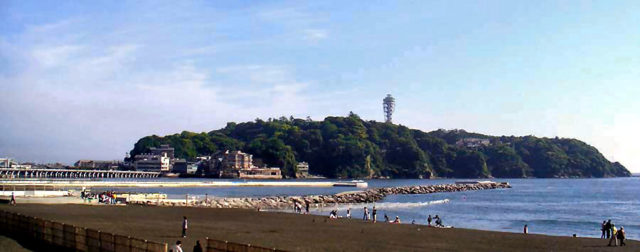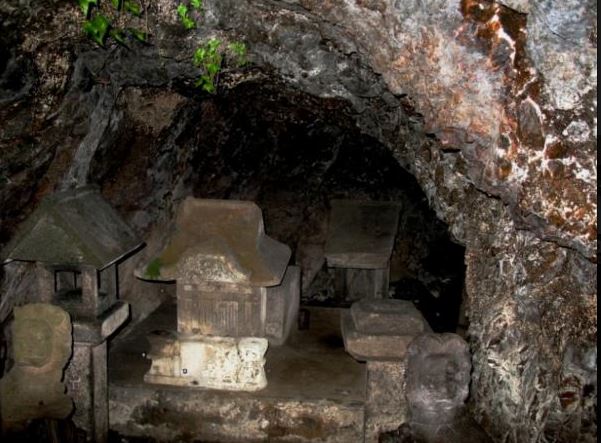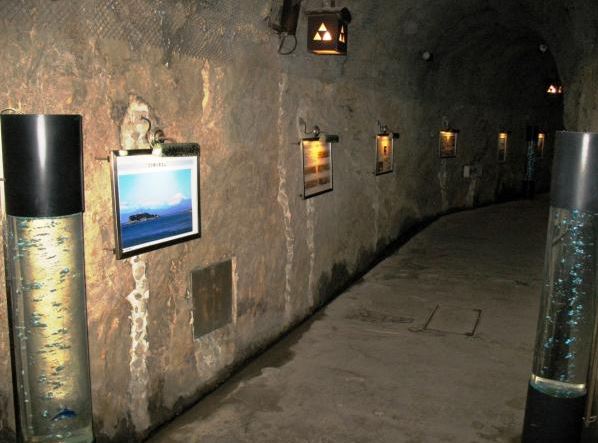Japan is a wonderful place, but all too often its cities are filled with masses overworked people shambling down the crowded streets. The city never sleeps, and it seems like everyone is stressed. So how do these hard-working people keep it together? It’s probably because Enoshima Island is just an hour away.

Enoshima is a beautiful island that is connected to Japan’s mainland by a bridge. It is divided into a yacht harbor for all the hard-working professionals and a mini forest that can be explored by foot or even on paid escalators situated across the tourist-fueled island. This relaxing paradise offers a variety of attractions that include a beach, a park, and a cool observation tower where tourists can enjoy beautiful views of Mount Fuji. But perhaps the most exciting attraction on the island of Enoshima is the Enoshima Iwaya Caves.
Even though the island is a popular summer getaway, Enoshima started as a religious shrine about 1,500 years ago. The story of Enoshima’s Iwaya Caves began when the Kinmei Emperor scheduled a meeting with an oracle, who recommended he build a shrine inside a beautiful cave off the coast. This suggestion sparked many years of religious worship, journeys, and practices done by renowned monks and legendary samurais. Just a few examples of these influential figures are En-no-ozunu, Kuhkai, En-nin, and Nichiren. Over time, the Enoshima Iwaya Caves became more and more renowned until the entire island became a religious sanctuary visited by many devotees and worshipers.

However, in 1971, there was a terrible accident caused by falling rocks that shut the caves down for over 20 years. For decades the caves became known as an eerie, forbidden sanctuary. Adventurous kids would venture to the mouth of the caves, but few were brave enough to ever enter. Over time, legends circulated around the caves, even suggesting that somewhere deep within the cave, there is a secret passageway that links all the way to Mt. Fuji. But finally, after decades of abandonment, the caves were repaired in 1993 and quickly became one of the most visited parts of the island.
The caves are located in the back of the island and open out into the beach. To get to the entrance of the caves you need to climb a series of stairs to the top of the island, or you can take one of the escalators located on the island. Then you descend over 200 steps back down to sea level and the edge of the island. If that adventure sounds too exhausting, don’t worry! You can take a ferry from the mainland, but make sure you check the schedule. Everything depends on what time of year it is and even the weather, so planning ahead is crucial.

Once you pass the entrance, the first cave is found by walking through a long narrow tunnel. Once you make it through the tunnel and into the first cave, you’ll be handed a candle lantern. Even though most of the cave is lit, the candle becomes a hit as people explore its darker corners. The entrance tunnel is decorated with wonderful photos and the history of the caves. Further back, there are Buddhist statues, and about two-thirds of the way in the cave divides into two. The left fork extends across 150 meters into the caves and holds the statues of the island’s goddesses. The right branch, however, is shorter and contains a statue devoted solely to the sun goddess Amaterasu, who is said to be a direct ancestor of the current emperor.
If you ever stumble upon Enoshima, be sure to swing through the Iwaya caves! Not just because of all the excitement, but because of its connection to spirituality and its mystic elegance.
